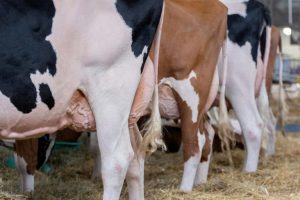
Avian flu is spreading rapidly among cattle, but public health and infectious disease experts are concerned the United States is too limited in its testing, leaving an incomplete picture of the virus’s spread.
The threat to the general public is currently low, health officials say, and the country’s milk supply is safe. Just one person has been infected.
But the outbreak is widespread; officials have found the virus in 42 herds across nine states. Dairy farm workers are at risk every time they are exposed to potentially infected cattle, and viral mutations could cause an outbreak, experts warn.
Cases are potentially being missed, either in people, cattle or both. In past avian flu outbreaks in other parts of the world, the virus typically kills about half the people it infects.
But even if this strain doesn’t pose a significant risk to the public, many experts see the response as the biggest test of pandemic preparedness since COVID-19.
“There are opportunities that have been missed that we could have absolutely applied from the COVID experience. I think there’s still time. We’re not in trouble yet,” said Erin Sorrell, a senior scholar at the Johns Hopkins Center for Health Security.
Bird flu was first detected in dairy cows in March, though data from viral samples showed it had been circulating in cattle for at least four months prior. That’s concerning to some experts, who said there could have been widespread human exposure and asymptomatic spread among dairy workers.
Farmers have been reluctant to allow federal health officials onto their land to test potentially infected cattle amid uncertainty about how their businesses would be impacted.
Farmworkers have also been reluctant to participate in screening, and experts said it’s likely due to a mix of fears over job loss, immigration status, language barriers and general distrust in public health systems.
Exposure does not necessarily mean infection, but the more workers who are exposed to potentially infected cattle, the greater the risk. Each new infection in mammals provides the opportunity for the virus to mutate.
“Without testing, without surveillance, we have no idea [of the spread],” Sorrell said. “We are not able to essentially move forward with an improved approach to protecting agricultural workers from occupational exposures if we don’t understand how they were exposed, and the potential risk of additional people being exposed and infected.”
Stacey Schultz-Cherry, an expert in animal influenza at St. Jude Children’s Research Hospital, said those limitations are a hindrance but officials should be able to find workarounds, such as wastewater testing.
“There are ways to do surveillance and testing on samples that can’t or maybe don’t have to be traced back to a particular area or particular farm, because people are going to be very sensitive about it,” she said.
“It is important for the public health officials at the state level, or the state veterinarians, or state ag officials, for us, to essentially communicate that it’s in the long-term best interest of the industry and all of us to make sure that we have as much information as possible,” Agriculture Secretary Tom Vilsack told reporters in a recent briefing.
“Producers obviously look at this circumstance and they see this as an animal health issue … so they may not fully appreciate and understand the approach that public health officials need to take in the circumstance,” Vilsack said.
William Schaffner, an infectious disease specialist and professor at the Vanderbilt University school of medicine, said dairy industry producers and workers don’t have the same relationship with public health as the poultry and egg industry does.
“This is new for them; they’re more edgy and concerned,” Schaffner said. “All these diplomatic overtures and discussions are going on and are being led at the local level, because that’s where personnel are more comfortable. COVID developed a political veneer, and that impeded public health. That legacy still exists, and that may influence some of the caution in the dairy industry.”
You can now read the most important #news on #eDairyNews #Whatsapp channels!!!
🇺🇸 eDairy News INGLÊS: https://whatsapp.com/channel/0029VaKsjzGDTkJyIN6hcP1K

























